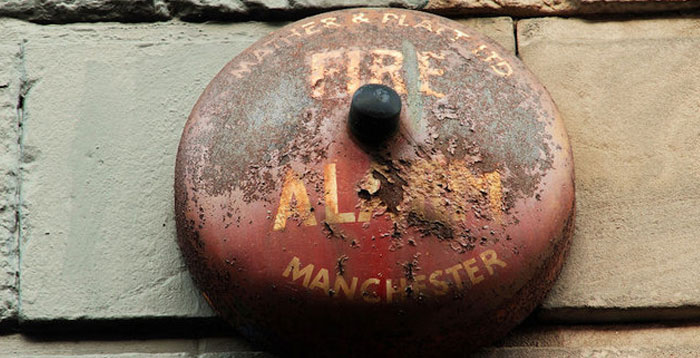Why undertake fire safety drills?
If all employees are adequately prepped on what exactly to do in the event of a fire, why do fire safety drills need to be undertaken in the first place?
There are a couple of different reasons to why fire drills are beneficial:
Firstly, they give all staff the chance to practice and get use to evacuating the building in a correct, safe and quick manner; theory and practice, in reality, can completely diverge. The actual experience of an evacuation, even if it’s a drill, in the real event of a fire, will result in a reduced state of panic as people will know what is expected of them and how to evacuate safely.
Secondly, fire safety drills offer the chance for escape and evacuation routes to be tested for effectiveness and also by offering the opportunity for fire detection systems and alarm systems to be tested in order to ensure that they are working as they should.
Ultimately, they allow all employees to be best placed and best prepared in the event of a real fire, whilst ensuring the maintenance and functionality of all fire protection technologies. Such tests really can and do save lives.
How often should you have a fire safety drill?
This is a more difficult question to answer and unfortunately doesn’t have a straight yes or no answer:
Legally you have to undertake only one fire safety drill per year. However, more are advisable. How many more ultimately depends on the nature of your workforce. For example, if you employ shift workers it would be a good idea to ensure that each worker has experience of at least one drill a year.
It is advised that as an employer you should undertake a risk assessment to indicate how many annual fire drills would be covetable.
Undertaking a fire safety drill
Planning a fire safety drill
When preparing for a fire safety drill you should decide upon something to monitor or to improve upon. For example, evaluating how effective a specific evacuation route is, or try to get everyone out quicker and safer than previously recorded.
Additionally, there should be present a specially trained and appointed fire marshal team that are on hand to help and ensure all employees are out. You should too have deputies appointed and give them the opportunity in these drills to take note of the duties of each fire marshal so that they can step in case of an absence.
Should you inform your team of the Fire Safety Drill?
There is no legal or official guidance on whether you should or should not inform staff prior to carrying out a fire safety drill. There are confident arguments for both sides:
On one hand it can be said that informing your employees of a planned drill can result in them not taking it seriously. On the other hand not informing them can lead to startling your staff and as a result, they may not know if it is a drill or not and whether to evacuate or not. Similarly, not informing can also lead to disgruntled individuals as you can interrupt important work or meetings.
The overall consensus seems to be that informing staff is the best practice. This also gets them into the habit of always evacuating as soon as they hear the fire alarm. If you operate a building in a public place, the public should always be informed of a planned drill.
During the fire safety drill
It is a legal requirement that “you must keep the results as part of your fire safety and evacuation plan.” As such, it is advised that you should position observers at different points of the evacuation routes so that they can record and evaluate how the drill goes and point out any weaknesses or anything that needs to be improved upon.
It is also a good idea to time the whole evacuation from the moment that the alarm sounds to the moment the last person is safely evacuated. This will allow you to gauge, in the event of a fire, how long, on average, it will take your team to reach safety. Fire Marshals should take a register at pre-set assembly points to keep track of where everyone is and who is safely out of the building.
It is also a good idea to block off the main evacuation routes in a drill so that staff are forced to use alternative exits. This will keep people on their toes and think about how to escape the building properly. It also mimics a real fire scenario as it is possible that certain exits would be impassable due to fire or indeed smoke.
Do not forget to debrief!
On completion of a fire safety drill, it is vital that a debrief is undertaken. This allows you to improve, evaluate and openly discuss how things went. It is also a good idea to ask participants how they think it went and how they believe it can be improved upon from their point of view.
It is important to remember that Fire safety drills are an integral part of your company’s security and the welfare of your workforce. They really can make all the difference.
Coopers Fire
At Coopers Fire, we are industry leaders in providing, designing, installing and servicing fire curtains and smoke curtains. Discreet and effective protection in the event of a fire.
If you would like to discuss what products we have on offer and what we can do to help you protect your family and ensure fire safety in your home please visit our website or contact us.


